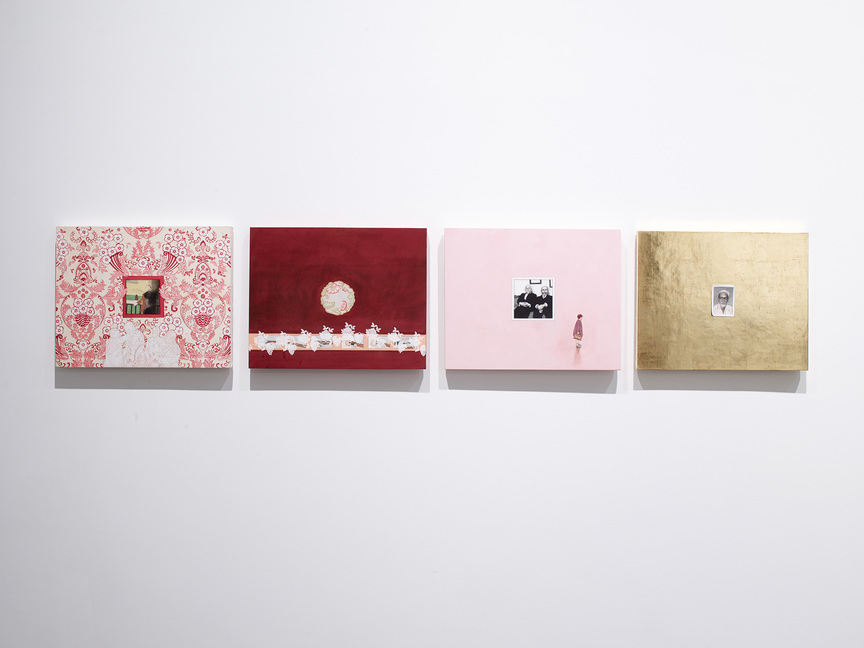-
From Current Issue
-
- Editor’s Letter Fire in the Heart
- Reviews I Gusti Ayu Kadek Murniasih
- Reviews 11th Seoul Mediacity Biennale: “One Escape at a Time”
- Dispatch Networked China
- One on One Monira Al Qadiri on Yukio Mishima
- Essays The rise of independent art spaces in pandemic-era Shanghai
- Features Tuan Andrew Nguyen
- Table of Contents
- Web Exclusives
- Archive
- Subscribe

R
E
V N
E
X
T
Installation view of “Homelands: Art from Bangladesh, India and Pakistan” at Kettle’s Yard, Cambridge, 2019–20. Photo by Stephen White. Courtesy Kettle’s Yard.
Homelands: Art from Bangladesh, India and Pakistan
Majoritarian rhetoric is currently the mainstay of South Asian politics. The Indian Citizenship (Amendment) Act granting citizenship to those fleeing from neighboring regions passed on December 11, 2019, and has propelled mass protests due to its exclusion of Muslims and over fears of the increase in refugees. Parallels have been drawn to the creation of Pakistan in 1947 in the name of religion—which, as the painful birth of Bangladesh in 1971 demonstrated, proved inefficient in holding together the diverse population. Overnight, people were separated and new identities were born.
Against this background—and in response to intensifying religious nationalism in South Asia—“Homelands: Art from Bangladesh, India and Pakistan” at Kettle’s Yard, University of Cambridge, showcasing the works of eleven artists, dissected the contemporary relevance of the concept of home, and the narratives built around being from, or of, a place.
In light of the Indian prime minister Narendra Modi’s recent revocation of Jammu and Kashmir’s autonomy, Sohrab Hura’s series Snow (2014– ) is searingly poignant. Shot over the last five years, the 27 photographs portray the regions’ recurrent violence. In some, the white color of the snow-covered landscape is purged of its meaning of peace, taking on new symbolism referencing India’s agenda of ownership assertion and financial control, subtly disguised in its tourism campaigns promoting the areas’ snowfalls. In another image, a woman lying on the ground with her eyes blighted by a lump of snow allude to the pellets fired which have blinded many. In other photographs, a line of stones forms a make-shift blockade in a road, while blood stains mark another pathway. These desolate terrain photographs isolate the area, with the vulnerable figures within them capturing the current conditions brought about by India’s authoritarian tactics in the form of military curfews and communication black outs.
This notion of heavy surveillance and political hostility is intensified in Munem Wasif’s Spring Song (2019). Taken in the refugee camps of Teknaf, Bangladesh, the photographs show an inventory of items owned by the Rohinge refugees: a rudimentary tannoy speaker, a can of skin lotion, and a bundle of dried fish. Documented like museological objects and positioned on block colored backgrounds, the sterile images recall possessions that have been extracted from their owners, akin to objects displayed in some museum collections. Their provenance bespeaks a history of trauma.
Uprooted people share this anguish. Desmond Lazaro’s commission, Chile, 1973, Hungary, 1957, U.S.A, Texas, 2017 and Bangladesh (all 2019) chronicle the experiences of immigrants residing in Cambridge from these respective countries. His interviews with these individuals were transformed into four exquisite miniatures portraying the isolated fragments of their memories. Each canvas, with a background of a floral motif, pallid pink, scarlet red, and thick gold pigment respectively, highlights a piece of memorabilia such as a sepia passport photo and a lone figure carrying a suitcase. These images carry the weight of Lazaro’s observations and the experiences common to his interviewees, that of emotions of upheaval, relocation, adjustment, reconciliation, and forgiveness.
Likewise, optimism seems to evade Shilpa Gupta. Blame (2002) clings onto unresolved tensions, capitalizing on visceral fears associated with the concept of nationalism. A fly-poster featuring a simple red bottle labeled “Blame,” distributed by the artist in Karachi as part of her titular 2002 intervention, is highlighted by the accompanying provocative text: “Blaming you makes me feel so good so I blame you for what you cannot control your religion your nationality I want to blame you. It makes me feel good.” Her intervention digs deep into the psyche of ongoing antagonism between Pakistan and India.
As the plurality of the title hints, the show does not offer a thesis. The works overlap at times by extending the concept of home beyond geographies in the imagination, and contradicting in their fixation with the land’s physical borders. This knotty mess of perspectives is testimony to the erratic idea of home; as experienced by South Asia at the moment, home is malleable, mobile, and can be abstracted.
“Homelands: Art from Bangladesh, India and Pakistan” is on view at Kettle’s Yard, Cambridge, until February 2, 2020.
To read more of ArtAsiaPacific’s articles, visit our Digital Library.




















